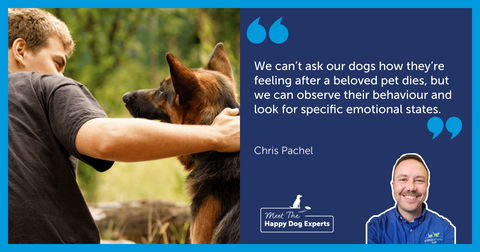
Hyperactivity in Dogs: A Happy Dog Expert Explains!
I receive many cases in my practice from guardians who come to me because their dog is hyperactive. This is an interesting subject to break down because there can be a variety of causes behind hyperactivity in dogs. There are also various potential solutions to consider if this becomes a bigger issue in your household. Let’s explore this further.
What Causes Hyperactivity in Dogs?
Physiological
Very often, hyperactivity in dogs and puppies is physiological. By this, I mean that it can be normal for dogs that are genetically predisposed to high levels of energy and activity. For instance, this could be certain breeds or younger animals. Alternatively, this could be a dog who is not being adequately stimulated or whose behaviour has been reinforced in one way or another.
Problems occur when the dog’s opportunity for exercise is restricted, when they are deprived of necessary social interaction, and when the dog has poor control over its environment. Often, these dogs also have other associated behavioural problems such as destructiveness, excessive barking, demands for attention, or lack of self-control. All this can lead to very annoying and inappropriate situations for coexistence.

Organic Pathologies & Conditions
Hyperactivity in dogs can also be a symptom of different organic pathologies. For example, some diseases that involve pain or itching can contribute to hyperactive behaviour in dogs.
Different terms have been used to refer to hyperactivity in dogs. This includes hyperkinesis, hypersensitivity-hyperactivity disorder, and hyperactivity-hyperexcitability disorder. To highlight its similarities with attention deficit hyperactivity disorder (ADHD) in children, some authors have proposed that hyperactivity disorder in dogs should be considered a disease in itself.
Can Dogs Have ADHD?
In children, ADHD appears to be characterised by a decrease in the synthesis and an increase in the destruction of certain neurotransmitters, such as dopamine and noradrenaline. This ends up generating problems in the regulatory circuits of several areas of the brain. Thus, these children may show disturbances in concentration, impulsivity and/or hyperactivity that may continue into adulthood.
In dogs, the term ADHD used in scientific literature describes a problem that can manifest itself with excessive activity, impulsivity, attention deficits and/or aggression, and that compromises the quality of life of the guardian and the dog1,2.

ADHD in dogs usually appears in younger animals and often improves with age. In addition, it seems that certain factors may influence how this pathology is presented. It has been found that certain breeds such as German Shepherds, Belgian Shepherds, and Terriers may have a greater predisposition to suffer.
As for environmental factors, these seem to have a special importance during puppyhood. Early adoption of the dog (before two months of age), leaving the puppy alone for long periods of time after adoption, having little social contact, the use of punishment, and experiencing stressful situations can all contribute to a dog developing ADHD.
How to Help a Dog with Hyperactivity
Of course, if your dog has hyperactivity or attention deficit problems, you should see a vet so that they can make a proper diagnosis and rule out diseases that may cause these behaviours. Depending on the diagnosis, they may prescribe drugs, pheromones, food supplements and/or behavioural guidelines. Advice for caring for a hyperactive dog can include:
- Provide adequate exercise for the dog, adapted to its age and breed
- Establish routines in terms of activities that revolve around your companion, including play
- Use of interactive toys
- Positive training exercises, in which it is recommended to reward quickly so that the dog does not lose interest
- Relaxation protocols
- Ignore demands for attention and interact with the dog when it is relaxed
- Avoid punishment

How to Avoid Hyperactivity in Dogs
On the other hand, there are several recommendations we can give regarding the prevention of these problems:
- Since ADHD seems to have a certain genetic factor, we should avoid breeding animals that show signs of attention problems, hyperactivity, impulsivity, or aggressiveness
- Avoid early adoption of a puppy so that it has the right social experiences with their mother and siblings. Remember that the ideal age for adoption is around two months of age
- Avoid leaving the puppy alone for a long time after adoption
- Meet our dog's social needs through social play, petting, and other pleasant interactions
- Positively educate our companions
- Exercise appropriately for the dog's age and breed
- Allow the dog to sleep as many hours as they need to properly rest
Finally, we must always remember that if any of our dog's behaviour worries us, we must go to the vet so that a diagnosis can be made and appropriate treatment plan implemented. Equally, a dog's puppyhood is a very sensitive period in which their experiences can largely determine the presentation of behavioural problems in the future. For this reason, I always recommend having a discussion with your vet before the adoption of the puppy. This way, the vet can resolve any doubts you have. Lastly, you should only adopt the puppy during a period you are able to dedicate the time they deserve after adoption.
Are you interested in learning more about dog behaviour from our team of Happy Dog Experts? Check out all our articles online! You can also Get in touch to ask any questions, or stay informed with our latest tips, advice, and Q&As, by signing up to our newsletter.
Bibliography








































